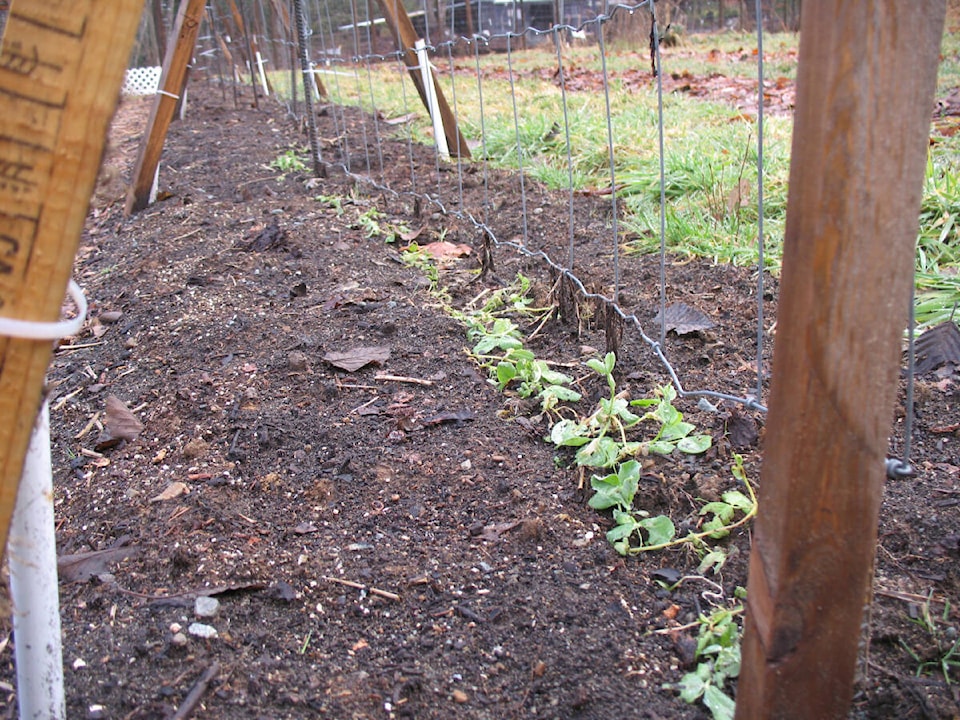“I believe in planting early to extend the growing season as much as possible. Grow things as late as you can, too. Plant all your hardiest crops as soon as the soil can be worked.”
So wrote Dick Raymond, one of my favourite gardening experts, but I admit I had my doubts four weeks ago when the peas I had sown inside and then transplanted following his advice were promptly covered by snow. I expected them to perish, but peas always surprise me with their resilience to cold weather. In the warmer climes of Victoria I have successfully sown peas at Christmas and harvested a lovely early crop, but planting anything here around Christmas would involve an ice pick. Even in mid February I thought I was pushing my luck, but the snow has melted and the peas have prospered, restoring my faith, although they look a bit worse for wear.
Gardening experts have varied recommendations on the best way to plant peas, spacing the seeds anywhere from “peas love crowds so plant them close together” to six inches apart. In past years I have tried several methods, but this year I decided on a single row along the trellis, one inch apart, planting greens and radishes alongside that can be harvested before the peas crowd them out. Last year we had an early scorcher that burned my first sowing of peas, so this time I will cover them with something to shade them and mulch them thickly once the rainy season ends, to keep the soil cool and moist. My second and third sowings produced well last year, providing one more reason to sow several batches.
When I transplanted the seedling peas I sowed another batch outside, with a third sowing planned this week. After testing many varieties, I have decided to use “Tall Telephone” peas, and expect a fine crop in May and June, when they’ll be finished and beans will take over. I’ve tried using an inoculant that comes dried in packets, but I didn’t notice any difference so I save time and money and don’t use it anymore.
I’m also planting flowers at both ends of each bed to attract beneficial pollinators and confuse harmful insects, but mostly because I like them. Shakespeare said “A rose by any other name would smell as sweet,” but I prefer earlier blooms that attract pollinators when I need them. Juliet obviously knew very little about the birds and the bees; if she had the play would have ended very differently.
Please contact mary_lowther@yahoo.ca with questions and suggestions since I need all the help I can get.
